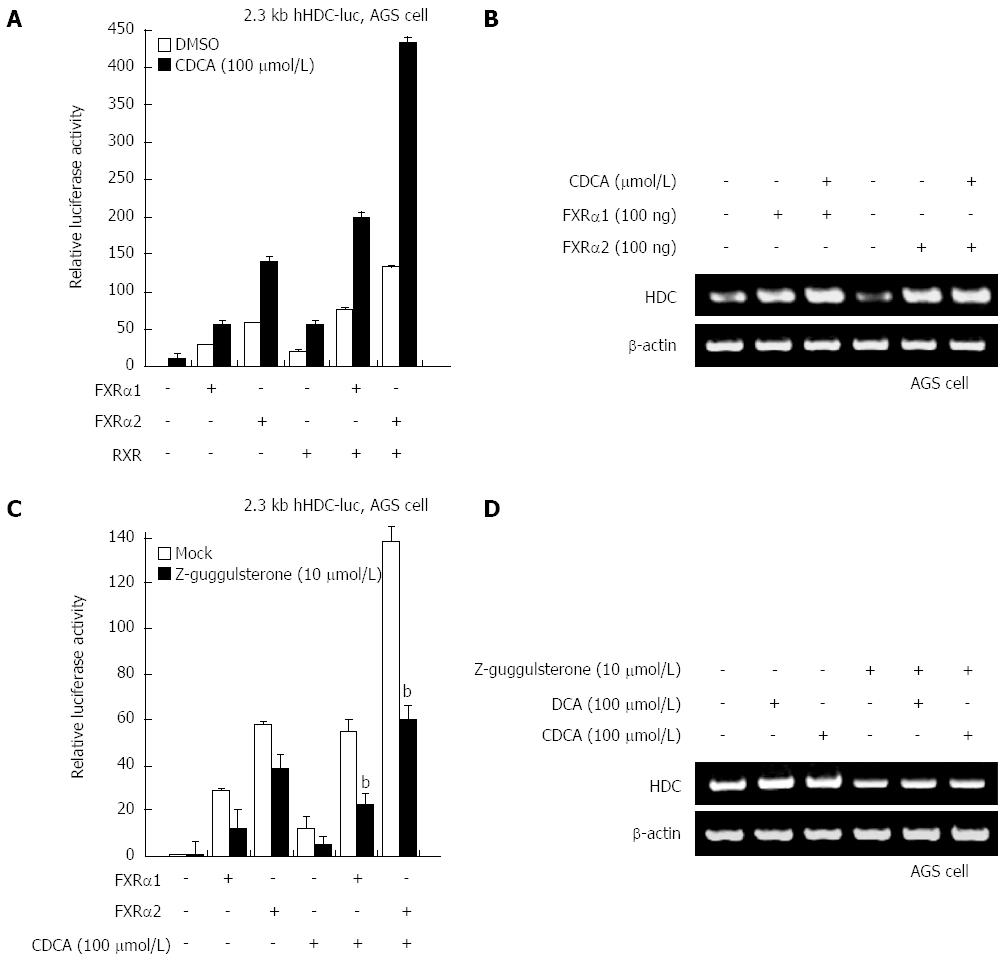Copyright
©2014 Baishideng Publishing Group Co.
World J Gastroenterol. Jan 7, 2014; 20(1): 175-182
Published online Jan 7, 2014. doi: 10.3748/wjg.v20.i1.175
Published online Jan 7, 2014. doi: 10.3748/wjg.v20.i1.175
Figure 2 Farnesoid X receptor mediates bile acid-induced increase in histidine decarboxylase in gastric cancer cells.
A: Human gastric adenocarcinoma (AGS) cells were cotransfected with the 2.3 kb histidine decarboxylase (HDC)-luc promoter construct and the indicated plasmids and then maintained either under control conditions or in the presence of chenodeoxycholic acid (CDCA). Cells were harvested and analyzed for luciferase activity; B: AGS cells were transfected with farnesoid X receptor (FXR)α1/2 expression plasmid and maintained either under control conditions or in the presence of CDCA. Total RNA was prepared from the cells, after which HDC mRNA levels were evaluated by reverse transcription-polymerase chain reaction (RT-PCR); C: AGS cells were cotransfected with the 2.3 kb HDC-luc construct and FXRα1/2 expression plasmid or in the presence of CDCA. Cells were then maintained either under control conditions or in the presence of z-guggulsterone. Cells were harvested and analyzed for luciferase activity. bP < 0.01 vs mock transfectants; D: AGS cells were treated with deoxycholic acid (DCA) or CDCA. Cells were maintained either under control conditions or in the presence of z-guggulsterone. Total RNA was prepared from the cells, after which HDC mRNA levels were determined by RT-PCR.
- Citation: Ku HJ, Kim HY, Kim HH, Park HJ, Cheong JH. Bile acid increases expression of the histamine-producing enzyme, histidine decarboxylase, in gastric cells. World J Gastroenterol 2014; 20(1): 175-182
- URL: https://www.wjgnet.com/1007-9327/full/v20/i1/175.htm
- DOI: https://dx.doi.org/10.3748/wjg.v20.i1.175









